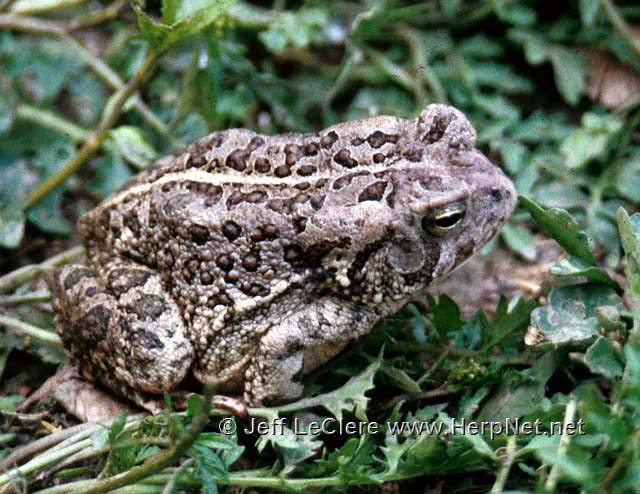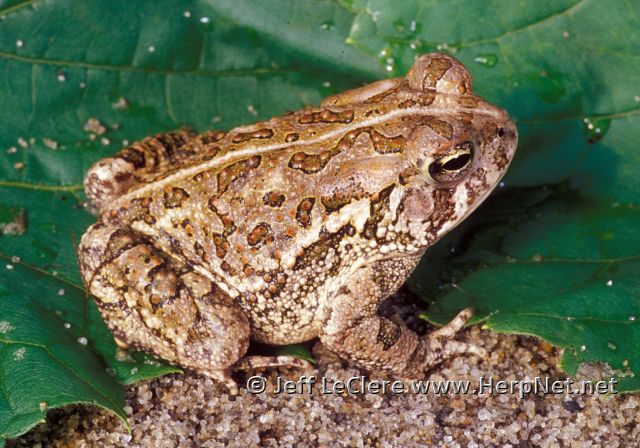Fowler’s Toad (Anaxyrus fowleri)
by Jeff LeClere

Status
Species of Greatest Conservation Need. The scientific name for this toad was formerly Bufo fowleri. Before that, the Fowler’s toad was considered a subspecies of the Woodhouse’s toad. The Fowler’s toad is now recognized as a full species.
Description
The Fowler’s toad reaches 3 inches in body length. These toads are often lighter than other Iowa toad species. The ground color may be varying shades of brown or gray to almost white. There are several dark spots on the back, each of which contain one to several warts, but these dark spots are not nearly as large as in Great Plains toads. A white or light mid dorsal stripe is usually present on the back.
To separate these toads from American toads, look for a plain white belly on the Fowler’s toad. In parts of Iowa, this toad may hybridize with the American toad (Christiansen and Bailey, 1991). These specimens may share characteristics of both species. I have seen hybrids in southeastern Iowa and they are reported from other areas as well (Green 1989; Laurin and Green 1990; Sanders 1987; Johnson 1992). These specimens look like Fowler’s toads with spotted bellies. However, Sanders (1989) states that some hybrids in certain areas are indicated by semi-bossed individuals.
Subspecies
There are no recognized subspecies of the Fowler’s toad, Anaxyrus fowleri. The Fowler’s toad was considered a subspecies of the Woodhouse’s toad. The Fowler’s toad is now recognized as a full species.
Range
The Fowler’s toad is found in sandy areas of the Mississippi Alluvial Plains in southeastern Iowa.
Habitat
The Fowler’s toad is found in rather open sandy and woodland edge areas of southeastern Iowa.
Habits
Fowler’s toads are often active during the day, especially in mild weather. They burrow in the sand for thermoregulation. They are also active on roads at night during rains or hot, humid weather. I have seen some specimens in eastern Iowa active on extremely hot days. These toads breed May through June. The call is a flat, buzzing sheep like bleat. It is likened to the cry of a newborn child by Christiansen and Bailey (1991); I agree, that is what it sounded like the first time I heard it! From a distance, it also reminds me of a flat buzzing whistle. The call only lasts 3 to 5 seconds long. Plains spadefoots have a superficially similar call, but it is shorter and sounds more like a quack.
Eggs are laid in pools that will hold water until the middle of July, when the toadlets emerge. Fowler’s toads breed in more permanent waterways because these are usually more available to them.
Food
They eat any insects or earthworms and even feed on harmful invertebrates in agricultural areas. This may also harm them as they inadvertently ingest pesticides and absorb other chemicals living in and near farm fields.



